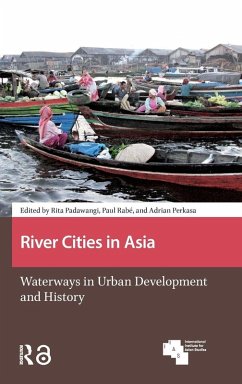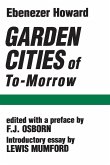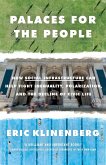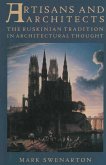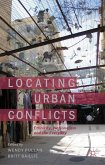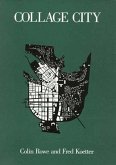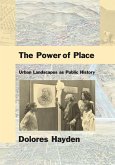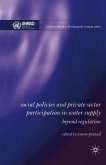River Cities in Asia
Waterways in Urban Development and History
Herausgeber: Padawangi, Rita; Perkasa, Adrian; Rabé, Paul
River Cities in Asia
Waterways in Urban Development and History
Herausgeber: Padawangi, Rita; Perkasa, Adrian; Rabé, Paul
- Gebundenes Buch
- Merkliste
- Auf die Merkliste
- Bewerten Bewerten
- Teilen
- Produkt teilen
- Produkterinnerung
- Produkterinnerung
River Cities in Asia uncovers the intimate relationship between rivers and cities in Asia from a multi-disciplinary perspective in the humanities and the social sciences. As rivers have shaped human settlement patterns, economies, culture and rituals, so too have humans impacted the flow and health of rivers. In Asia, the sheer scale of urbanization increases the urgency of addressing challenges facing urban rivers, leading to the importance of historically, socially, and culturally relevant solutions. However, cities are also uneven landscapes of power, affecting chances to achieve holistic…mehr
Andere Kunden interessierten sich auch für
![Garden Cities of To-Morrow Garden Cities of To-Morrow]() Ebenezer HowardGarden Cities of To-Morrow32,99 €
Ebenezer HowardGarden Cities of To-Morrow32,99 €![Palaces for the People Palaces for the People]() Eric KlinenbergPalaces for the People24,99 €
Eric KlinenbergPalaces for the People24,99 €![Artisans and Architects Artisans and Architects]() Mark SwenartonArtisans and Architects38,99 €
Mark SwenartonArtisans and Architects38,99 €![Locating Urban Conflicts Locating Urban Conflicts]() Locating Urban Conflicts91,99 €
Locating Urban Conflicts91,99 €![Collage City Collage City]() Colin RoweCollage City38,99 €
Colin RoweCollage City38,99 €![The Power of Place The Power of Place]() Dolores HaydenThe Power of Place31,99 €
Dolores HaydenThe Power of Place31,99 €![Social Policies and Private Sector Participation in Water Supply Social Policies and Private Sector Participation in Water Supply]() N. PrasadSocial Policies and Private Sector Participation in Water Supply76,99 €
N. PrasadSocial Policies and Private Sector Participation in Water Supply76,99 €-
-
-
River Cities in Asia uncovers the intimate relationship between rivers and cities in Asia from a multi-disciplinary perspective in the humanities and the social sciences. As rivers have shaped human settlement patterns, economies, culture and rituals, so too have humans impacted the flow and health of rivers. In Asia, the sheer scale of urbanization increases the urgency of addressing challenges facing urban rivers, leading to the importance of historically, socially, and culturally relevant solutions. However, cities are also uneven landscapes of power, affecting chances to achieve holistic ecological approaches. The central premise of River Cities in Asia is that a "river city" is one where proximity between a river and a city exists across time and space, natural and social dimensions. Recognition of these deep connections can help to better contextualize policy solutions aimed at rivers and their ecologies, including human life.
Produktdetails
- Produktdetails
- Verlag: Taylor & Francis Ltd (Sales)
- Seitenzahl: 292
- Erscheinungstermin: 15. Oktober 2022
- Englisch
- Abmessung: 234mm x 156mm x 18mm
- Gewicht: 585g
- ISBN-13: 9789463721851
- ISBN-10: 9463721851
- Artikelnr.: 64137339
- Herstellerkennzeichnung
- Libri GmbH
- Europaallee 1
- 36244 Bad Hersfeld
- gpsr@libri.de
- Verlag: Taylor & Francis Ltd (Sales)
- Seitenzahl: 292
- Erscheinungstermin: 15. Oktober 2022
- Englisch
- Abmessung: 234mm x 156mm x 18mm
- Gewicht: 585g
- ISBN-13: 9789463721851
- ISBN-10: 9463721851
- Artikelnr.: 64137339
- Herstellerkennzeichnung
- Libri GmbH
- Europaallee 1
- 36244 Bad Hersfeld
- gpsr@libri.de
Rita Padawangi is Associate Professor (Sociology) at Singapore University of Social Sciences. Her research is on social movements, community engagement, and environmental justice. Rita coordinates the Southeast Asia Neighborhoods Network (SEANNET), a collaborative urban research and education initiative. She recently published Urban Development in Southeast Asia (2022). Paul Rabé is Academic Coordinator of the Cities Cluster at the International Institute for Asian Studies (IIAS), Leiden as well as overall coordinator of the Urban Knowledge Network Asia (UKNA) and the River Cities Network: Engaging with Waterways in the Anthropocene (RCN). Paul is also series editor of Amsterdam University Press's Asian Cities Book Series, and is Lead Expert in Urban Land Governance at the Institute for Housing and Urban Development Studies (IHS), Erasmus University Rotterdam, where he is also joint coordinator of the Urban Environment, Sustainability, and Climate Change academic track. A political scientist by training, with a doctoral degree (2009) in policy, planning and development from the University of Southern California's Sol Price School of Public Policy, Paul has over 25 years of experience in advisory work, capacity development, research, and teaching on urban policy topics, focused on urban land governance and the intersection of land (use) and the management of water and water bodies in urban and peri-urban areas. Adrian Perkasa is a PhD candidate at Leiden University, and a lecturer in the Department of History, Faculty of Humanities, Universitas Airlangga in Indonesia. Howard Dick is a professorial fellow in the Faculty of Business and Economics at the University of Melbourne and writes in Economic History and Urban Studies with prime focus on Indonesia. Books include Surabaya, City of Work (2002) and, as co-author, Cities, Transport and Communications: The Integration of Southeast Asia (2003) and The City in Southeast Asia (2009). Emma Natalya Stein received her PhD in Art History from Yale University (2017), and is Assistant Curator of South and Southeast Asian Art at the National Museum of Asian Art, Smithsonian. She regularly conducts fieldwork on the intersection of art and landscape, and lectures in Asia, Europe, and the USA. Vera Dian Damayanti is a lecturer at the Department of Landscape Architecture, IPB University, Indonesia and is currently working on her PhD at the Centre for Landscape Studies, University of Groningen, the Netherlands. Her research focuses on the cultural biography of the river city landscape of Banjarmasin. Dr. Xiaomei Zhao is an associate professor on heritage studies and archi_x0002_tectural history at the Department of Cultural Heritage and Museology, Fudan University, Shanghai. She is trained in the fields of archaeology and architectural history. Her research interests include vernacular architecture, rural settlement, critical heritage studies, and the conservation of built heritage. Pralay Kanungo is Guest Researcher at Leiden University. He was DAAD Guest Professor at University of Heidelberg (2019-2020) and Fellow at Max_x0002_Weber-Kolleg, Erfurt (2018-2019) and ICCR Chair of Contemporary India Studies at Leiden University (2013-2018). He specializes in Hindu nationalism, religion and urbanity, and Indian politics. Kanungo authored RSS's Tryst with Politics (2002) and co-edited The Algebra of Warfare-Welfare (2019). Michaela F. Prescott's research focuses on the socio-spatial dimensions of landscapes and urban environments, and the evolving relation of landscape, infrastructure, and urbanization. Trained as a landscape architect, she undertakes action-research projects related to urbanization of water systems, infrastructure's impact on neighborhoods and communities, and delivery and sustainability of community-based projects. Dr. Youngah Guahk is a political scientist working as a lecturer of Asian affairs at LUISS University in Rome, Italy. Karen Coelho is an associate professor at the Madras Institute of Development Studies in Chennai, India. She received her PhD in anthropology from the University of Arizona at Tucson in 2004. Her work includes studies of informal settlements and urban ecologies, and critical examinations of urban collective action and urban infrastructure including housing and water. Kuei-Hsien Liao, Ph.D. is Associate Professor at the Graduate Institute of Urban Planning, National Taipei University, Taiwan. Her research focuses on the interaction between cities and rivers with respects to flood hazard mitigation, flood resilience, ecosystem services, and environmental justice. Dr. Alexander Follmann studied geography in Cologne (Germany) and Vancouver (Canada). His PhD research (University of Cologne) on the River Yamuna in Delhi was funded by PhD fellowships from the German Academic Exchange Service (DAAD) and the German Academic Scholarship Foundation. He currently works at the Institute of Geography, University of Cologne.
List of Illustrations and Captions
Acknowledgments
Chapter 1. River Cities in Asia: Waterways in Urban Development and History (Rita Padawangi
Paul Rabé
and Adrian Perkasa)
Chapter 2. Water World to Inundation: River Cities in Southeast Asia
from Old to New Millenium (Howard Dick)
Chapter 3. From the City to the Sea: Riverside Temple Networks in South India (Emma Natalya Stein)
Chapter 4. The Political Economy of Banjarmasin's River Landscape during the Sultanate Period (1526-1860) (Vera D. Damayanti)
Chapter 5. Through the Passage and Across the Worlds: The Bridge-and-Temple Complex in the Popular Processions in a 'Rurban' Town in Jiangnan Region (Xiaomei Zhao)
Chapter 6. Challenges to an Iconic River-City: Contesting Communities
Threatened Heritage and Endangered Ecology in Varanasi (Pralay Kanungo)
Chapter 7. River-Edge Relationships: A Comparison of Riversides in Indonesian Cities (Michaela F. Prescott)
Chapter 8. Recovering the Stream: River Access as a Catalyst for Political Mobilization in Suwon City
South Korea (Youngah Guahk)
Chapter 9. Water's Edge Urbanisms along the Buckingham Canal in Chennai (Karen Coelho)
Chapter 10. The Social Downside of Flood Control: The Case of a Marginalized Community in Taipei (Kuei-Hsien Liao)
Chapter 11. Hybrid Riverscapes: Governing River Cities beyond Land and Water Dichotomies-the Yamuna in Delhi
India (Alexander Follmann)
Index.
Acknowledgments
Chapter 1. River Cities in Asia: Waterways in Urban Development and History (Rita Padawangi
Paul Rabé
and Adrian Perkasa)
Chapter 2. Water World to Inundation: River Cities in Southeast Asia
from Old to New Millenium (Howard Dick)
Chapter 3. From the City to the Sea: Riverside Temple Networks in South India (Emma Natalya Stein)
Chapter 4. The Political Economy of Banjarmasin's River Landscape during the Sultanate Period (1526-1860) (Vera D. Damayanti)
Chapter 5. Through the Passage and Across the Worlds: The Bridge-and-Temple Complex in the Popular Processions in a 'Rurban' Town in Jiangnan Region (Xiaomei Zhao)
Chapter 6. Challenges to an Iconic River-City: Contesting Communities
Threatened Heritage and Endangered Ecology in Varanasi (Pralay Kanungo)
Chapter 7. River-Edge Relationships: A Comparison of Riversides in Indonesian Cities (Michaela F. Prescott)
Chapter 8. Recovering the Stream: River Access as a Catalyst for Political Mobilization in Suwon City
South Korea (Youngah Guahk)
Chapter 9. Water's Edge Urbanisms along the Buckingham Canal in Chennai (Karen Coelho)
Chapter 10. The Social Downside of Flood Control: The Case of a Marginalized Community in Taipei (Kuei-Hsien Liao)
Chapter 11. Hybrid Riverscapes: Governing River Cities beyond Land and Water Dichotomies-the Yamuna in Delhi
India (Alexander Follmann)
Index.
List of Illustrations and Captions
Acknowledgments
Chapter 1. River Cities in Asia: Waterways in Urban Development and History (Rita Padawangi
Paul Rabé
and Adrian Perkasa)
Chapter 2. Water World to Inundation: River Cities in Southeast Asia
from Old to New Millenium (Howard Dick)
Chapter 3. From the City to the Sea: Riverside Temple Networks in South India (Emma Natalya Stein)
Chapter 4. The Political Economy of Banjarmasin's River Landscape during the Sultanate Period (1526-1860) (Vera D. Damayanti)
Chapter 5. Through the Passage and Across the Worlds: The Bridge-and-Temple Complex in the Popular Processions in a 'Rurban' Town in Jiangnan Region (Xiaomei Zhao)
Chapter 6. Challenges to an Iconic River-City: Contesting Communities
Threatened Heritage and Endangered Ecology in Varanasi (Pralay Kanungo)
Chapter 7. River-Edge Relationships: A Comparison of Riversides in Indonesian Cities (Michaela F. Prescott)
Chapter 8. Recovering the Stream: River Access as a Catalyst for Political Mobilization in Suwon City
South Korea (Youngah Guahk)
Chapter 9. Water's Edge Urbanisms along the Buckingham Canal in Chennai (Karen Coelho)
Chapter 10. The Social Downside of Flood Control: The Case of a Marginalized Community in Taipei (Kuei-Hsien Liao)
Chapter 11. Hybrid Riverscapes: Governing River Cities beyond Land and Water Dichotomies-the Yamuna in Delhi
India (Alexander Follmann)
Index.
Acknowledgments
Chapter 1. River Cities in Asia: Waterways in Urban Development and History (Rita Padawangi
Paul Rabé
and Adrian Perkasa)
Chapter 2. Water World to Inundation: River Cities in Southeast Asia
from Old to New Millenium (Howard Dick)
Chapter 3. From the City to the Sea: Riverside Temple Networks in South India (Emma Natalya Stein)
Chapter 4. The Political Economy of Banjarmasin's River Landscape during the Sultanate Period (1526-1860) (Vera D. Damayanti)
Chapter 5. Through the Passage and Across the Worlds: The Bridge-and-Temple Complex in the Popular Processions in a 'Rurban' Town in Jiangnan Region (Xiaomei Zhao)
Chapter 6. Challenges to an Iconic River-City: Contesting Communities
Threatened Heritage and Endangered Ecology in Varanasi (Pralay Kanungo)
Chapter 7. River-Edge Relationships: A Comparison of Riversides in Indonesian Cities (Michaela F. Prescott)
Chapter 8. Recovering the Stream: River Access as a Catalyst for Political Mobilization in Suwon City
South Korea (Youngah Guahk)
Chapter 9. Water's Edge Urbanisms along the Buckingham Canal in Chennai (Karen Coelho)
Chapter 10. The Social Downside of Flood Control: The Case of a Marginalized Community in Taipei (Kuei-Hsien Liao)
Chapter 11. Hybrid Riverscapes: Governing River Cities beyond Land and Water Dichotomies-the Yamuna in Delhi
India (Alexander Follmann)
Index.

